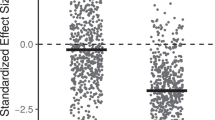Abstract
For unicellular organisms, a lack of effects of local species richness on ecosystem function has been proposed due to their locally high species richness and their ubiquitous distribution. High dispersal ability and high individual numbers may enable unicellular taxa to occur everywhere. Using our own and published data sets on uni- and multicellular organisms, we conducted thorough statistical analyses to test whether (1) unicellular taxa show higher relative local species richness compared to multicellular taxa, (2) unicellular taxa show lower slopes of the species:area relationships and species:individuals relationships, and (3) the species composition of unicellular taxa is less influenced by geographic distance compared to multicellular taxa. We found higher local species richness compared to the global species pool for unicellular organisms than for metazoan taxa. The difference was significant if global species richness was conservatively estimated but not if extrapolated, and therefore higher richness estimates were used. Both microalgae and protozoans showed lower slopes between species richness and sample size (area or individuals) compared to macrozoobenthos, also indicating higher local species richness for unicellular taxa. The similarity of species composition of both benthic diatoms and ciliates decreased with increasing geographic distance. This indicated restricted dispersal ability of protists and the absence of ubiquity. However, a steeper slope between similarity and distance was found for polychaetes and corals, suggesting a stronger effect of distance on the dispersal of metazoans compared to unicellular taxa. In conclusion, we found partly different species richness patterns among uni- and multicellular eukaryotes, but no strict ubiquity of unicellular taxa. Therefore, the effect of local unicellular species richness on ecosystem function has to be reanalyzed. Macroecological patterns suggested for multicellular organisms may differ in unicellular communities.
Similar content being viewed by others
Author information
Authors and Affiliations
Additional information
Electronic Publication
Rights and permissions
About this article
Cite this article
Hillebrand, H., Watermann, F., Karez, R. et al. Differences in species richness patterns between unicellular and multicellular organisms. Oecologia 126, 114–124 (2001). https://doi.org/10.1007/s004420000492
Received:
Accepted:
Published:
Issue Date:
DOI: https://doi.org/10.1007/s004420000492




